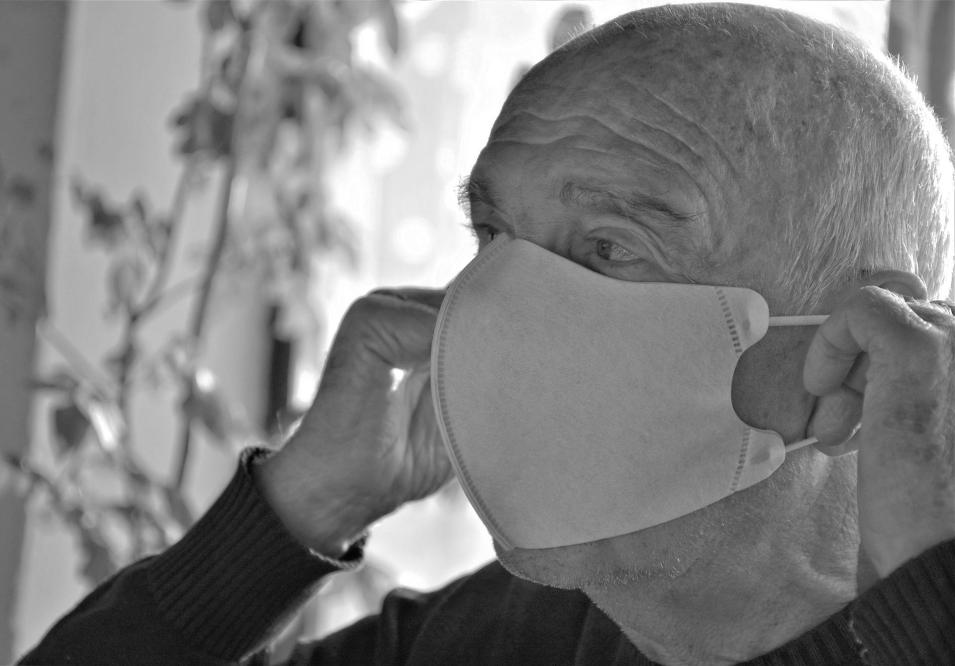Older Adults and COVID: Still a Risk

You may recall my early blog entry when vaccines first became available to the public for COVID prevention: https://isl.fsu.edu/article/youve-gotten-vaccine-can-life-now-return-normal. I had hopes a year ago that such rapid progress with vaccines might lead to herd immunity and an end to the pandemic, though advised caution. As it turns out, advising caution was wise. A recent article showed that there is a risk of severe consequences for aging adults from COVID-19, particularly from the now widespread Omicron variant https://www.nytimes.com/2022/05/31/health/omicron-deaths-age-65-elderly.html.
The recent winter wave of Omicron hit those age 65+ hard with a large increase in deaths compared to other age groups. Why did this happen? Part of the reason is the more infectious nature of Omicron coupled with a weaker immune response as people age. Many seniors have still not had their first vaccine shot, second vaccine shot, booster, or second booster shot, despite being advised to do so. For those who never received a vaccine, the death rate appears to be 156 per 100,000 seniors during the winter Omicron wave. For those vaccinated, the death rate drops strikingly to 24 per 100,000. For those who had a booster, it was 7 per 100,000.
Death is of course the most attention-grabbing outcome. However, even for those who recover, there are potentially severe consequences post-COVID. Organ systems can be invaded by the virus, resulting in cardiovascular damage, lung damage, kidney damage, musculoskeletal damage, and neurological damage, including damage to cognitive health https://isl.fsu.edu/article/long-term-effects-covid-19-infection-may-shape-cognitive-health-aging-society.
Recently released statistics by Centers for Disease Control indicate that for those less than age 65, the chance of post-COVID injury is about one in five. For those age 65+ it is about one in four: https://www.cdc.gov/mmwr/volumes/71/wr/mm7121e1.htm.
What can be done? People should avail themselves of vaccinations and boosters as soon as possible. Fortunately, if you do contract the virus, there are now effective treatments that didn’t exist when the first vaccines were rolled out. The Pfizer anti-viral drug, Paxlovid, is recommended for older adults who contract COVID-19.
Paxlovid can significantly reduce the impact of the virus, such as becoming hospitalized and dying. Although the government is trying to increase the availability of Paxlovid, it is still not that easy to get, as I found out when trying to pick up a prescription for my wife, who recently fell ill despite being vaccinated, boosted, and boosted a second time. Instead of Paxlovid being at my local pharmacy, I had to travel to a more distant one. Convenient access is important because the drug is only effective if given early in the disease, usually within five days of infection. The problem is that many people do not get symptoms until about two or three days after being infected. Then there can be a delay before testing positive and arranging a telehealth visit with your physician to be given the prescription. Our physician’s office discourages in-person visits when COVID-positive, so prefers to make a prescription decision following a telehealth session. There are probably many people who do not have access to rapid Antigen home tests, despite their being free to order: https://www.covid.gov/tests.
We were fortunate to have test kits handy at home, and even more fortunate that our home was large enough for my wife to isolate upstairs while I stayed on the main floor, managing to avoid infection. She recovered within a week or so.
One should be wary that all is well even after treatment with Paxlovid, recovery, and a negative test. There is evidence that some people can rebound following treatment with Paxlovid, somewhere around day 10 and that they can infect those around them, leading the CDC to offer new guidelines for isolation and testing following a course of Paxlovid: https://emergency.cdc.gov/han/2022/pdf/CDC_HAN_467.pdf. At this point we don’t know the prevalence of rebound, as it was estimated as about 2% (equally in Paxlovid and placebo groups) by Pfizer in their original clinical trial. It may be higher than that, so if you or someone you know are treated with Paxlovid it would be good to do an antigen test (or better yet, a PCR test) around day 10 after initial diagnosis.
We have come a long way since the start of the pandemic, with effective vaccines and effective treatments. We need to encourage friends, family, neighbors to get vaccinated, particularly at-risk older adults. If despite best efforts to avoid infection, people become infected, they should try to get an effective treatment as soon as possible.













